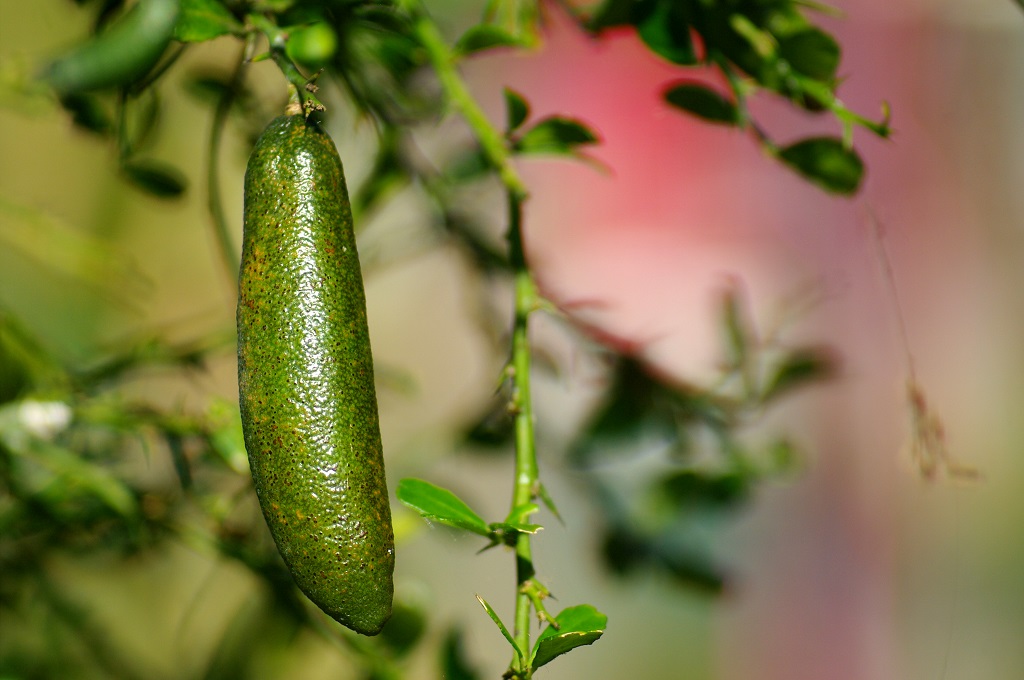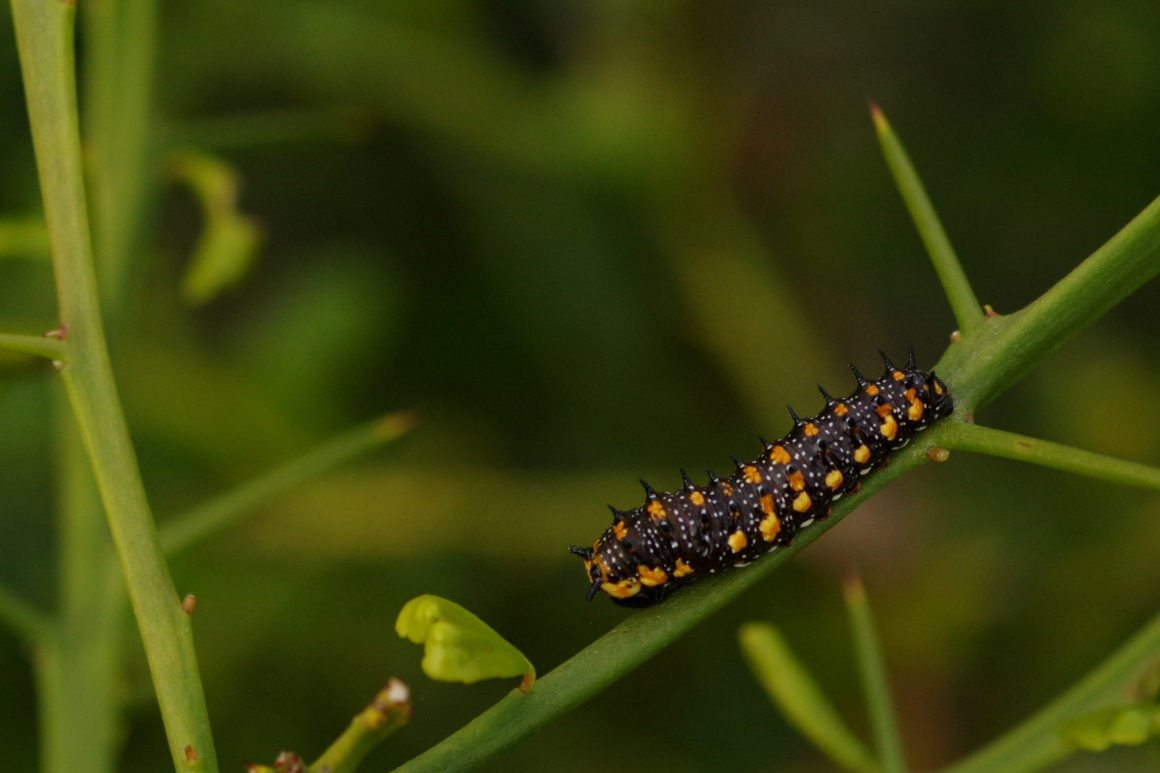Aussie gardeners have a problem. We increasingly live in high densities as suburbia expands. Yet we dream of growing our own fruit and of providing habitat for wildlife in our gardens. At first, high density living and fruit tree cultivation may seem mutually exclusive, let alone the prospect of supporting native wildlife as well. Yet there’s a native Aussie plant that produces amazing fruit, fits perfectly on a cramped balcony or terrace, and supports native butterflies too! Introducing the humble Finger Lime (Citrus australasica).
So, what can you do with Finger Limes?
The dried skin makes a marvellous flavouring for everything from cocktails to roast chicken. The juicy pearls (often called ‘lime caviar’) add a kick to fresh oysters, prawns or crab legs; and for those who don’t eat meat, they add some tang to a fresh guacamole or can be used in mouth-watering coconut and lime cake or even lime curds.

So, you’re inspired to get a Finger Lime to indulge your green thumb, gluttony, and gardening for wildlife ethos! But how do you look after this amazing native fruit tree?
Finger Limes aren’t fussy about their potting mix, but choose a well-drained one as they resent being waterlogged. Many large hardware stores now even stock citrus/fruit tree potting mixes which are perfect for Finger Limes. Next, get a nice big terracotta pot. The permeability of terracotta helps prevent waterlogging and will give your Finger Lime room to grow into.
Though they are forgiving trees when it comes to water, the best practice is to wait for the soil to dry out a little between drinks in autumn, winter and spring. During the summer months, they will appreciate their soil being moist (though not wet). To check this, simply grab a handful of soil and squeeze it; if it stays together in a clump without dripping, it’s nicely moist – but if water drips out, it’s too wet.
The next thing to think about is the position of your little tree. Finger Limes prefer full sun, but will tolerate semi-shade or bright indirect light (though the more sun the better).
Finally, we come to feeding and pruning. Finger Limes will appreciate a feed each year and this can be as simple as adding some chicken or horse droppings or a slow-release fertiliser to the soil. This can be done in late spring when the tree is preparing to put on fresh growth. Keep in mind that in the wild, a Finger Lime can grow to six metres in height, but prune yours each spring to keep it around one metre high. Regardless of its dwarfed size, it will bear plenty of fruit once established and happy!
So why not go down to your local nursery or garden centre and pick up a Finger Lime to indulge your inner urban farmer. You’ll be able to grow your own fruit while providing habitat for some stunning native butterflies.
Banner image by Luis Mata [CC BY-NC-SA 2.0], via Flickr


Leave a Reply